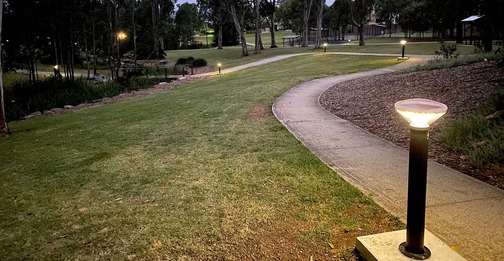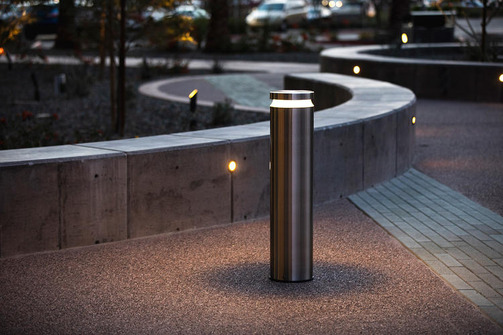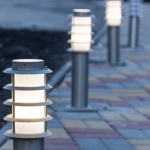Public Perception and Acceptance: Community Responses to Solar Bollards in Urban Areas
As our urban landscapes evolve, so too do our methods of lighting and energy consumption. One such innovation gaining traction is the use of solar bollards – unassuming yet impactful fixtures that illuminate our streets while harnessing the power of the sun. But how do communities truly feel about these modern marvels? Join us as we delve into the fascinating realm of public perception and acceptance surrounding solar bollards in urban areas.

In the pursuit of sustainable living, cities worldwide are embracing renewable energy solutions. Solar bollards, slender posts equipped with solar panels and LED lights, represent a prime example of this eco-conscious shift. These fixtures serve a dual purpose: providing illumination for pathways, parks, and streets while minimizing environmental impact.
Our aim is to explore how communities perceive and accept solar bollards in urban environments. From understanding the technical intricacies to uncovering public attitudes and examining real-world case studies, we unravel the complex tapestry of solar bollard integration.
Understanding Solar Bollards
Technical Description
Solar bollards harness sunlight through photovoltaic panels, storing energy in batteries during the day to power LED lights at night. Unlike traditional lighting solutions reliant on grid electricity, solar bollards operate independently, offering flexibility in installation and reducing reliance on fossil fuels.
Benefits of Solar Bollards
- Environmental Impacts: Solar bollards contribute to carbon footprint reduction by utilizing clean, renewable energy sources.
- Economic Benefits: Beyond environmental gains, municipalities enjoy long-term cost savings through reduced energy consumption and maintenance expenses.
Challenges and Limitations
- Technological Limitations: Despite advancements, challenges like energy storage and efficiency persist, requiring ongoing innovation.
- Aesthetic and Spatial Considerations: Integrating solar bollards seamlessly into urban landscapes demands careful planning to ensure functionality without compromising visual appeal.
Community Perceptions
Public Awareness and Knowledge
- Survey Data: Recent studies indicate a growing awareness of solar energy solutions among the public.
- Educational Efforts: However, educational initiatives to inform communities about solar bollards and their benefits remain sporadic.
Attitudes Towards Renewable Energy
- General Attitudes: Urban communities generally express support for renewable energy initiatives, viewing them as vital steps towards sustainability.
- Perceptions of Solar Bollards: Specific attitudes towards solar bollards vary, influenced by factors such as aesthetics and perceived effectiveness.
Case Studies
Successful Implementations
- Examples: Cities like Portland and Adelaide have successfully integrated solar bollards into their urban landscapes.
- Key Factors: Community involvement and effective communication emerge as critical factors in fostering acceptance and success.

Challenges in Adoption
- Instances of Resistance: In certain cases, resistance or criticism towards solar bollards has arisen, often due to aesthetic concerns or resistance to change.
- Analysis: Understanding and addressing these obstacles are essential steps towards widespread adoption.
Strategies for Enhancing Acceptance
Community Engagement
- Importance: Engaging community members fosters a sense of ownership and increases acceptance of solar bollards.
- Methods: Workshops, public meetings, and informational campaigns serve as effective avenues for engagement.
Policy and Incentives
- Local Government Support: Proactive policies and incentives from local governments play a crucial role in facilitating solar bollard installations.
- Potential Incentives: From tax incentives to grants, various mechanisms can incentivize businesses and residents to embrace solar bollards.
In closing, our exploration has revealed a nuanced landscape of public perception and acceptance surrounding solar bollards in urban areas. While communities generally support renewable energy initiatives, specific attitudes towards solar bollards vary, influenced by factors ranging from aesthetics to educational outreach.
Future Prospects
Looking ahead, solar bollards hold immense potential to shape the future of urban development, provided challenges such as technological limitations and aesthetic concerns are addressed. Continued research and action are crucial to enhancing public acceptance and maximizing the benefits of this sustainable lighting solution.
In the ever-evolving dance between technological advancement and community values, finding harmony is key. As we strive towards a greener, more sustainable future, let us not forget the importance of preserving the unique character and integrity of our urban landscapes.
FAQs
Q: Do solar bollards work efficiently in all weather conditions? A: While solar bollards are designed to function in various weather conditions, extreme weather may impact their performance. Regular maintenance and proper placement can mitigate these effects.
Q: Are solar bollards cost-effective compared to traditional lighting solutions? A: Despite the initial investment, solar bollards offer long-term cost savings through reduced energy consumption and maintenance expenses, making them a financially viable option over time.
Q: Can solar bollards be customized to suit specific aesthetic preferences? A: Yes, many solar bollard designs offer customization options to align with different urban design schemes and architectural styles, ensuring seamless integration into diverse landscapes.
Q: How can communities get involved in advocating for solar bollard installations? A: Community members can engage with local governments, participate in public consultations, and advocate for policies that support renewable energy initiatives, including solar bollard installations.
Q: Are there any health or safety concerns associated with solar bollards? A: Solar bollards are designed with safety in mind, adhering to relevant regulations and standards. However, proper installation and maintenance are essential to ensure optimal performance and safety.
Sources:
- https://www.energy.gov/eere/solar/types-solar-lighting
- https://www.sciencedirect.com/science/article/pii/S2352484719326599
- https://www.researchgate.net/publication/281833689_Public_Attitudes_to_Renewable_Energy
- https://www.sciencedirect.com/science/article/pii/S0306261911011647
- https://orcasolarlighting.com.au/solar-bollard-lighting
Read more about commercial solar street lights
Illuminating the Path: The Rise of Commercial Solar Bollards in Australian Landscapes
Eco-Friendly and Efficient: How Solar Bollards Are Shaping Australia’s Green Cities
Cost Analysis: The Long-Term Savings of Solar Bollards Over Traditional Lighting Solutions
Innovation in Illumination: The Latest Technologies in Solar Bollard Design
The Role of Solar Bollards in Australia’s Varied Climates
Regulatory Insights: Compliance and Standards for Installing Solar Bollards in Australia
The Future of Outdoor Lighting: Predictions for Solar Bollards in the Next Decade








